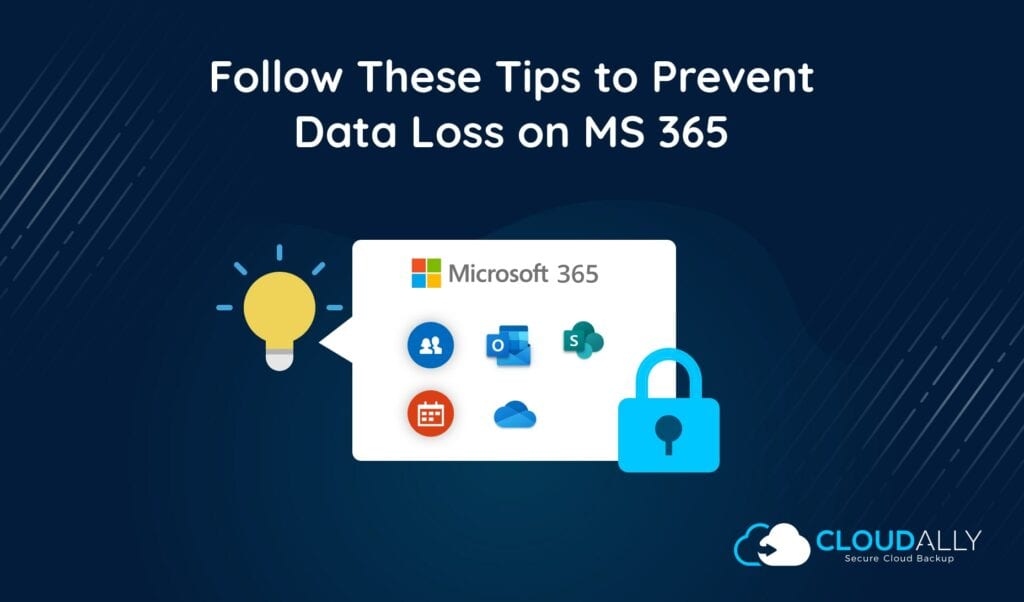Does Your Company Use Office 365?
Make Sure You Follow These Tips to Prevent Data Loss

With a reliable cloud-based solution in place, it means employees don’t necessarily have to be physically present in the office to be productive. Teams can be scattered all over the world and still be able to work as efficiently as they would if they were in the same brick-and-mortar office.
With all this functionality, it’s almost surprising to find out that there’s one aspect of enterprise cloud solutions that remains especially vulnerable–data loss.
Take the popular Software as a Service (SaaS) platform, Office 365, as an example. Being one of the more prominent cloud collaboration tools, you would assume that any data that gets deleted on it–for whatever reason–can be easily retrieved. But you’d be wrong. Unfortunately, Office 365 doesn’t protect users against data loss due to malicious attacks or user error. This is particularly worrying given that a study conducted by Aberdeen Group clearly illustrates the rise of cloud adoption among businesses. According to their research, 80 percent of respondents say that some form of SaaS application is now being used in their companies. And 32 percent say that they have experienced SaaS data loss in their own organization in some form. In fact, CSO from IDG notes that data breaches and accidental deletion are among the top 12 cloud security threats for 2017.
With these in mind, implementing actionable measures to reduce your vulnerability is essential. Because the reality is, the convenience comes at the expense of your data. Protecting your data–whether from malicious attacks or admin carelessness–is in your hands. And it starts by knowing what actionable steps you can take–

With that in mind, here are 5 ways you can avoid data loss in Office 365.
1. Ensure all mobile devices that access the platform are secure
It’s likely that your company uses both company-issued and personal devices to access work email, contacts, calendar, and other important data. In fact, MarketsandMarkets surveyed bring-your-own-device (BYOD) trends for 2017 and notes a 36 percent rise at the start of 2017. This number is even expected to jump to 50 percent at the start of 2018.
Given this, make sure that your team is able to implement and follow the company’s security policies carefully. Adding a feature that allows you to remotely protect proprietary information from malicious deletion or attacks is critical given how often data breaches happen today.
2. Implement multi-factor authentication for users
Malicious attacks today are getting more and more sophisticated. A single password—even one that uses a mix of upper and lower case letter, punctuation marks, and numbers—won’t be enough to keep data stored in Office 365 safe. It’s always better to be safe than sorry, so it’s best to enable multi-factor authentication to make it more difficult for hackers to access your account.
3. Avoid anonymous calendar sharing
One of the most useful features of Office 365 is its ability to share calendar information easily.
While it may seem like an innocuous feature unrelated to data breaches or loss, publicly sharing data can expose critical information about your business that would leave your company vulnerable to attacks. Hackers can use your schedules to determine how your company operates and identify which users are most vulnerable.
4. Establish role-based controls
Accessibility is one of the key advantages of Office 365. Be sure however to limit access to critical data. Carefully determine which users should and shouldn’t have access to specific files and features in your company. Talk to each department and coordinate with them to determine who should have access to what to minimize potential data leaks or loss.
5. Automate backups for your system
Office 365 unfortunately still only relies on the trash bin for data recovery. If someone hacks into your data, accidentally empties the bin, or maliciously destroys data, all your important data is gone forever. Implementing online data backups and disaster recovery will ensure that you have an archive of all your data, which you can recover if the need arises.
Office 365 has proven to be an essential tool for businesses today. But being responsible for the security of your company’s data means you have to be aware of the security risks you face while using it. To make sure that you protect your data from potential data loss, so get started with your 14 Day free trial.




